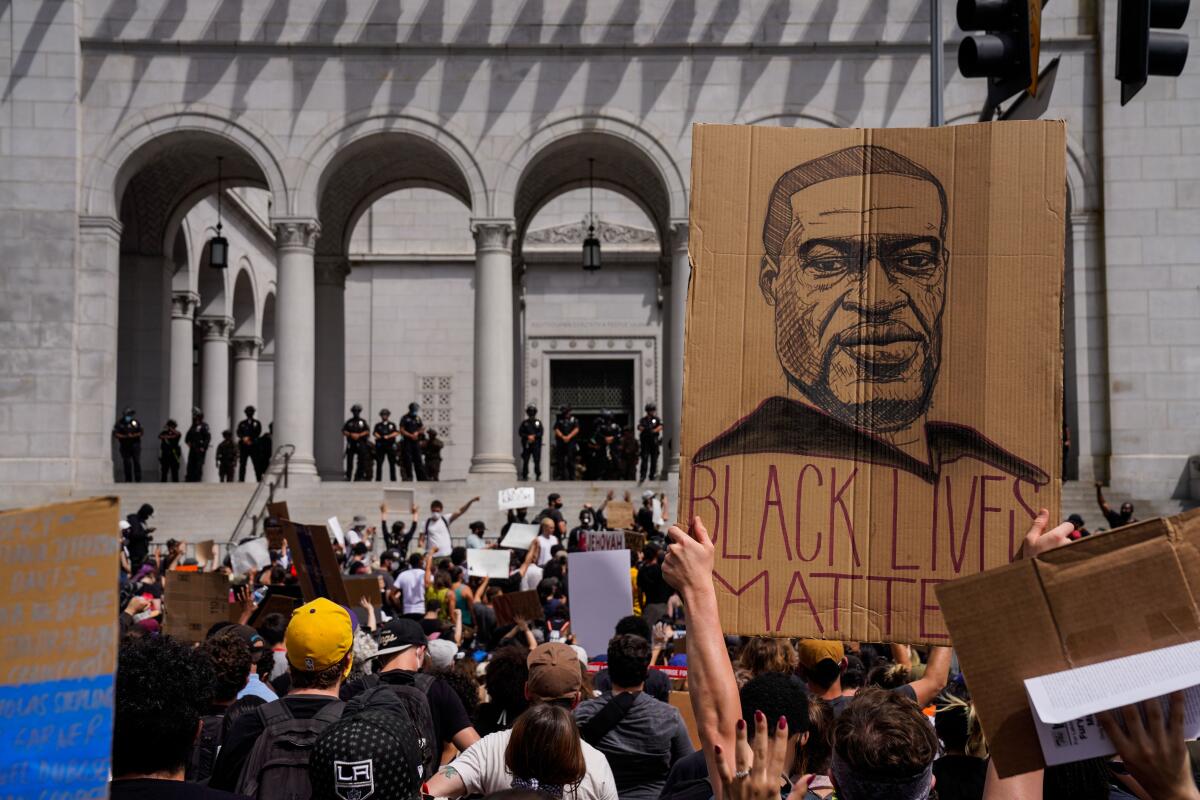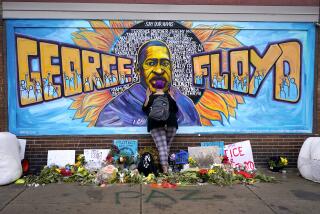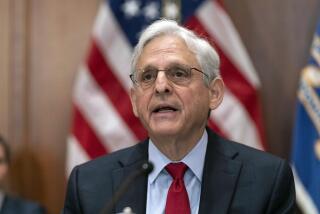Was George Floyd’s death in vain?

- Share via
Police kill about 1,000 Americans each year, and while the greatest number of dead are white, a disproportionate number are Black — about 30%, even though Black Americans make up only 14% of the population. So the killing of a Black man, George Floyd, by a Minneapolis police officer one year ago was in some ways no different from hundreds of other killings that happen every year in this country.
What seemed different was how the killing unfolded so slowly and so brutally, from the moment Derek Chauvin pressed his knee against Floyd’s neck through the ensuing nine minutes and 29 seconds that he kept it in place amid Floyd’s cries for help. Unlike a police shooting — over in a split second, with no time for reflection or reassessment of the situation — the aggression was continuous. It called to mind centuries of knees, police batons and ropes on and around the necks of Black people.
It was also different because it was deemed illegal.
Perhaps it was the slow cruelty, the righteous outrage, the civil protests (and the violent ones) and the sustained public attention, but in any event, the killing was followed by a trial in which the appropriate outcome was largely a matter of nationwide consensus: Chauvin was a murderer. It would have been shocking for the jury to find otherwise.
The Times Editorial Board examines the reckoning of the last year and considers what it means for policing and protest in Los Angeles and elsewhere.
The paradox of the Floyd case is that while it opened up an opportunity to discuss the numerous other instances of deadly force exercised by police against Black Americans, few of those other killings have been or will be found to have violated the law. Floyd’s death and Chauvin’s conviction make insufficient headway against police violence because the nation’s racial and policing problems have less to do with illegal police conduct and more to do with reprehensible conduct that lawmakers, the courts and the Constitution have made perfectly legal.
Consider, for example, the killing last year of Breonna Taylor in her own home in Louisville, Ky. Police burst into the apartment with a battering ram in the middle of the night in order to serve a search warrant — a dangerous and unnecessary act, but one deemed lawful under the Constitution. A startled occupant fired at the intruders, and police returned fire, killing Taylor — deemed a lawful act of self-defense, even though it was the officers themselves who had precipitated the danger. No charges were filed in Taylor’s death, although one officer faces trial for shooting into an adjacent apartment.
Or consider the death a year earlier in Aurora, Colo., of Elijah McClain, who like Taylor was accused of no crime, but instead was apprehended because he was observed wearing a ski mask and waving his arms. Police put McClain in a chokehold, cutting off the flow of blood and oxygen to his brain, while paramedics injected ketamine into his neck. He died several days later. No charges were filed against officers in McClain’s death.
Or consider the disabling shooting last year in Kenosha, Wis., of Jacob Blake, by a police officer, in the back, seven times. No charges were filed.
In these and other cases, the law and the Constitution grant extraordinary power to police officers to use potentially deadly force when other responses may be available.
The Constitution and the law, widely thought by a majority of Americans to be bulwarks against excessive government intrusion, instead protect that intrusion.
That will come as no surprise to many Black Americans when they recall that the Constitution and the law protected slavery for the nation’s first nine decades, then segregation for a century after that. So do the Constitution and the law, in granting superpowers to police, continue to perpetuate anti-Black racism?
That certainly cannot be the case, police defenders argue, when officers kill more white people than Black. And if the proportion of Black people killed is higher, does that not simply reflect the reality that a disproportionate number of Black people are arrested for and convicted of violent crimes?
But that doesn’t explain needless deaths like McClain’s or Taylor’s. And besides, if policing practices result in too many such deaths, it stands to reason that white people should be as outraged about them as their Black fellow citizens.
As activists argue over radical responses such as “defunding” or even abolishing police departments, state and federal lawmakers have proposed more modest reforms, such as preventing officers fired by one department for misconduct from being hired by another. The proposed federal George Floyd Justice in Policing Act would make this change to American policing and a host of others that make no reference to race, such as banning warrants of the type that led to Taylor’s death or chokeholds of the type used against McClain. The bill has cleared the House but is stalled in the Senate.
That means, to date, Floyd’s killing has set a very low floor for acceptable police conduct but has done little to transform policing or racial equity.
More to Read
A cure for the common opinion
Get thought-provoking perspectives with our weekly newsletter.
You may occasionally receive promotional content from the Los Angeles Times.










